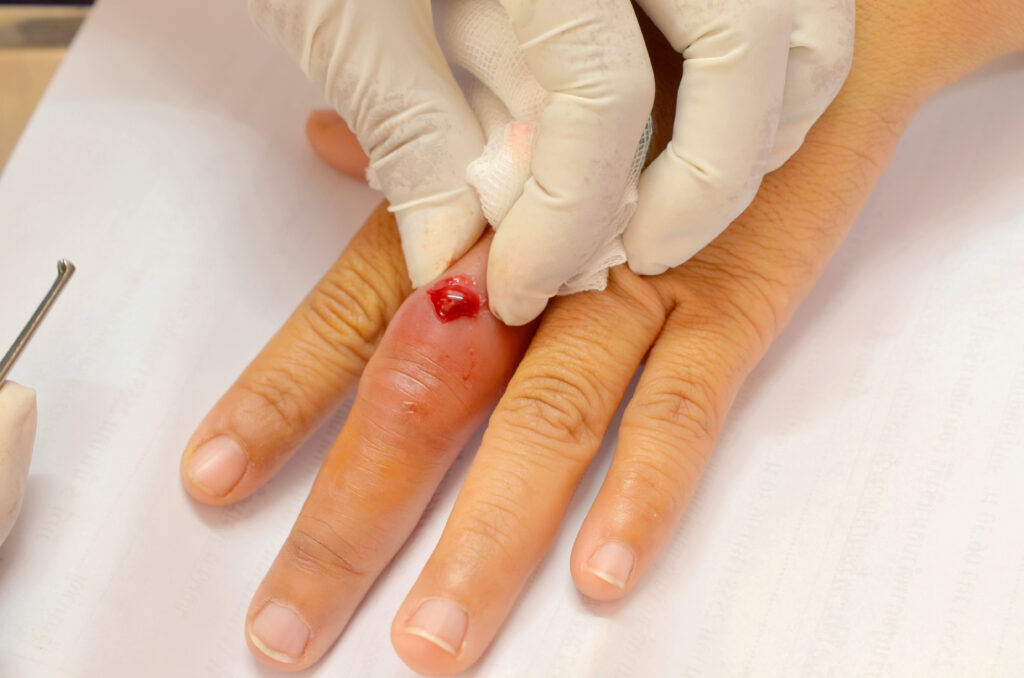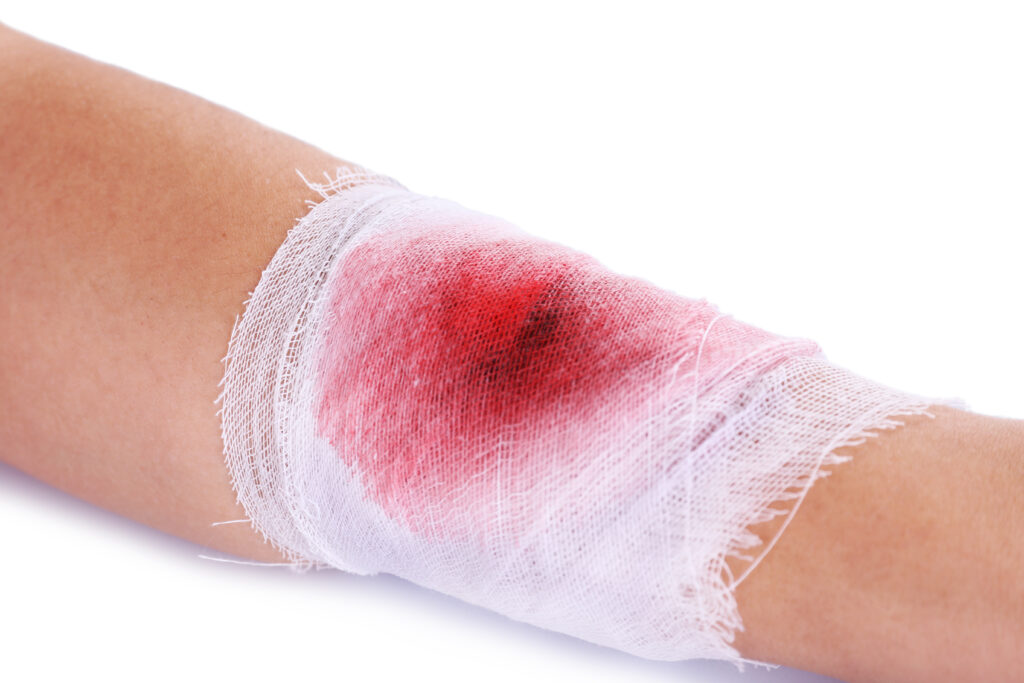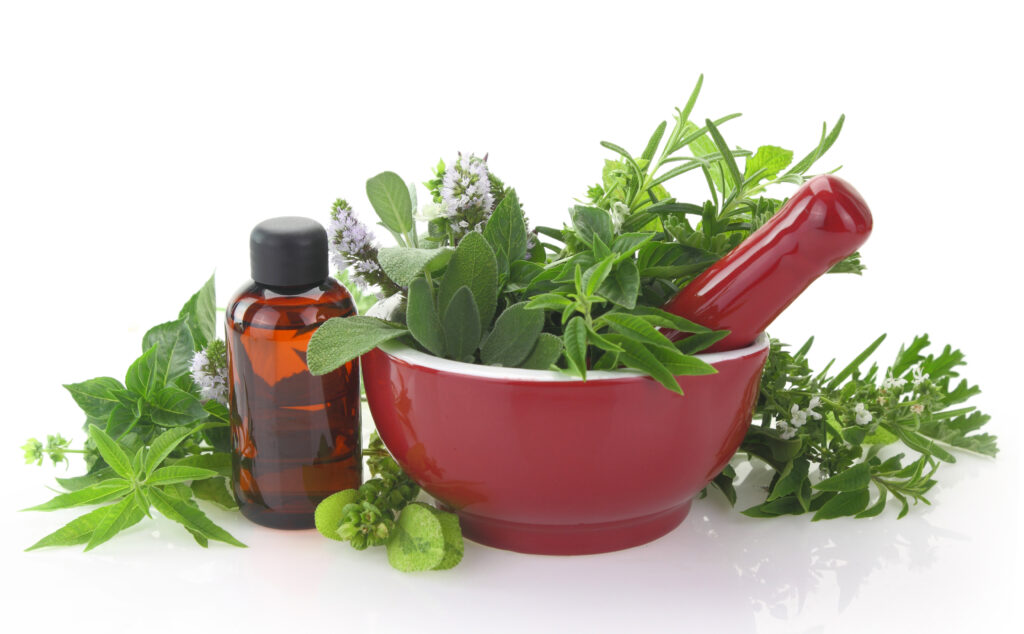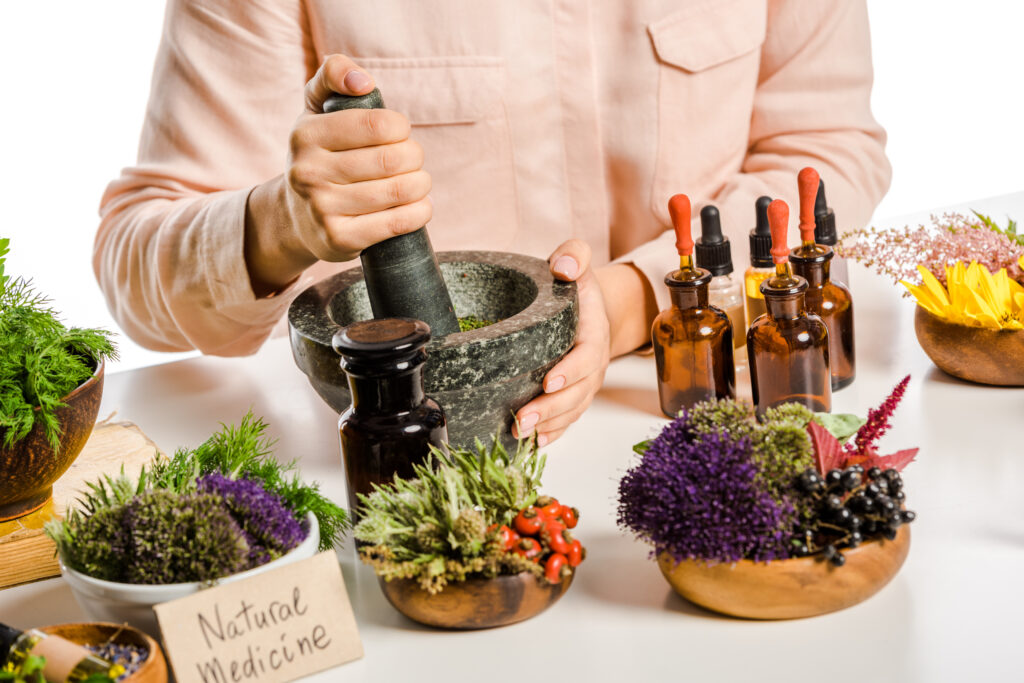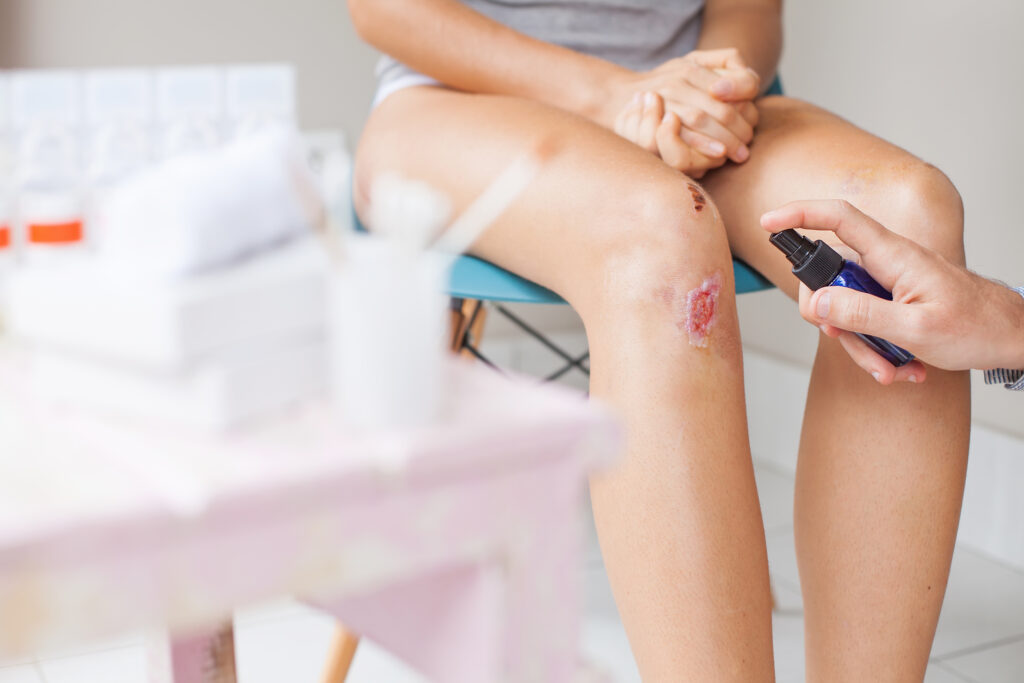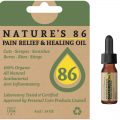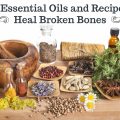Hola familia. Ever wondered how the human body functions?
Like how does a baby learn to talk?
How do you know which muscles to move to get up and walk?
And how on earth does X-Men’s Wolverine heal so damn fast?
When you really think about it, the intricacy involved in the healing process is unfathomable. Or is it?
Recently, I found myself staring at a wound on my leg I got after nicking myself with a razor. I could help but get fascinated with the fact that it stitched itself up. I mean how does skin pull itself together like that?
Now do not get me wrong, I understand the biology behind it and know the process that goes into healing, but man, it’s just so damn fascinating.
Were it not for the aging thing; we could have been immortal beings. But enough of that – I do not want you thinking I’m a weirdo.
Wounds will heal over time. But they do need some help to get there. This is where my advice comes in.
But before we get to that, you know how we do it here, break down the process, understand it and then formulate solutions. It is better this way, don’t you agree?
What Is A Wound?
There are many different ways of describing wounds. I have chosen to go with the technical version for now. Hope it doesn’t sound like jargon. If it does, give it some time, it will sink in.
Now, wounds are described by their location on the body and whether they are chronic or acute, closure method, symptoms, causes and visual appearance. The varying definitions are imperative as they help in wound management and finding viable healing methods.
Wounds are basically quick impact injuries where the skin gets torn, cut, or punctured which creates an open wound. However, blunt force trauma can also cause closed wounds which are popularly referred to as bruises or contusions.
Since we already looked at bruises in a previous article, this particular segment will be solely focused on Open Wounds.
The thing about open wounds is that we all have experienced them at some point in our lives.
Growing up, we could count the number of injuries we each had as kids and judge how much adventure and fun one has had so far.
Yes, it was a dangerous way to look at things, but in our defense, we were kids and didn’t know any better. The most common causes of open wounds are accidents and falls. Luckily, most open wounds are minor cuts that can be treated in-house.
Types of Open Wounds
Ummh, what kind of TV shows do you love?
If you like Sci-Fi, you probably are a dreamer.
If you love drama, sorry to say, you probably have too much drama in your life.
If you like those focused on Law, you end up knowing a lot about law and can even learn a few things on how to get away with murder if you’re keen enough (see what I did there?).
Now if you watch medical TV shows like House, the ER, the Resident and the Good doctor, you will pick up on a lot of medical terms. Heck, you probably have heard of the below types of open wounds – you just didn’t know it.
Abrasion
This type of open wound occurs when your skin is scraped or rubbed against a hard or rough surface. A road rash is a perfect example of an abrasion.
With this type of open wound, there usually isn’t a lot of bleeding. But regardless, it does need to be cleaned and scrubbed to keep infections at bay.
Laceration
When I first heard of this word, I thought the doctor had mispronounced it and actually meant ulceration. Lucky for me, I did not speak out and display my ignorance at the time.
A laceration is a deep tearing or cut on the skin. Common causes of lacerations include accidents with machinery, tools and knives. Lacerations cause extensive and rapid bleeding. First aid is imperative to stop the bleeding and before further medical care is offered.
Puncture
This is merely a small hole that is caused by a pointy and long object; say a nail or a needle. At times, and I’ve only seen these in movies and on the news, bullets can cause punctures.
These may not bleed a lot, but they may go deep enough to cause significant damage to the internal organs. If you have even a small puncture wound, you should visit your doctor for a tetanus booster shot. This shot is designed to prevent an infection and making the situation even worse.
Avulsion
Avulsions are a gruesome sight. Simply put, they are a complete or partial tearing away of the skin as well as tissue. This tearing away is usually forceful.
Usually, they occur during violent accidents including explosions, gunshots and road accidents. There is heavy and rapid bleeding. Note that these are different from amputations. Though most often, avulsions lead to amputations.
Signs And Symptoms That Your Wound Is Infected
Now in all honesty, if you had a wound, you would know you have it. The pain that follows does not allow for an injury to go unnoticed – unless you have congenital analgesia – a rare condition in which a person does not feel pain.
It may sound fun, but it is super dangerous. Think about it, the only reason you withdraw your hand from a hot pan, or fire, is because of the pain.
Pain keeps you safe. Without pain, a simple fall warrants a thorough physical checkup for injuries. It is a costly condition to have.
For open wounds, however, you do need to know whether they are infected or not. Infections complicate the treatment process, and as such, it is essential to learn how to identify an infected wound. Once you notice any of the below signs, it is vital that you visit your doctor for treatment.
1. Malaise
This is a non-specific sign of a systemic infection. It is surprisingly common and is usually associated with a lack of energy and a constant feeling of tiredness even after resting for prolonged hours. In this state, you may not be up to completing your daily chore and tasks. You might even start sleeping more than you usually do.
Persons recovering from surgeries experience this. However there is a huge different between malaise as a sign of an infection and as a normal recovery process. Persons recovering from surgical operations feel better and better on a daily basis. Those who contract infections will be feeling better and then the progress takes a sudden dump. Feelings of exhaustion kick in and leave you feeling lazy all through the day.
2. Fever
It is normal to run a fever after a surgery. Fevers are accompanied by a reduction in appetite and frequent headaches. Running a low fever of about 100 degrees Fahrenheit is the normal during a surgical recovery.
However, if the temperatures rise past this, it might be a sign that the wound is infected. If you experience such a fever, you should consult your doctor.
3. Fluid drainage
It is normal to have fluid draining from your open wound. The fluid can be yellow or clear. However, if the fluid is green or cloudy and has a foul smell, you should take it as a sign of infection.
A healthy wound drainage is manageable with negative pressure therapy – but seriously, get any pus discharging wounds checked out immediately.
4. Increased or continuous pain
Pain is common with wounds. However, as the wound undergoes the healing process, the pain should subside. Pain medications are designed to help you cope with the pain.
With time, you should stop using pain medication with ease. To ensure you do not experience unwarranted pain, you should avoid engaging in strenuous activities. If pain persists or even increases with time, it is a signal of an infection.
5. Swelling and redness
It is normal for a wound to have some redness and swelling. Take this as the body working its magic underneath. But this, like the pain, should with time reduce.
However, if the wound continues being red or develops radiating streaks consider it as an infection. The swelling should also subside with time. If the swelling does not go away after the initial stages of healing, you might have an infected wound.
6. Hot
When an infection occurs, the wound will start feeling warm. Why is this? Well, in a bid to contain the situation and fight off the infection, the body will send white blood cells to the wound.
The process causes the wound and the immediate surroundings to feel warm. If the temperatures continue, the infection could develop further symptoms.
Treatment Of Open Wounds
Minor wounds can effectively be treated in the comfort of your home. First and foremost, you should wash and then disinfect the wound. This process is essential in getting rid of the dirt and debris.
You should make use of direct pressure and elevation to control the swelling and the bleeding. When you are wrapping the wound, you should always use a sterilized bandage or dressing (though tiny wounds may heal just fine without bandages).
The wound should be kept dry and clean for at least five days. During this time, you should get lots of rest. If this is not possible, you should at least reduce exerting pressure to the wounded area.
Pain is synonymous with wounds. You should take acetaminophen as directed on the product packaging. You should avoid taking aspirin products by all means as they are known to prolong bleeding and delay the healing process.
If you have swelling or bruising, you should apply some ice or cold compresses. You should also avoid picking at the scab as they form. I know for some this is almost impossible as there is some satisfaction that is derived from peeling off the scab. But note that doing so only prolongs the healing process. Wherever you are out in the sun, apply some sunscreen on the wound until it is completely healed.
Medical Treatment
Different doctors use different methods to treat open wounds. After cleaning and numbing the wounded region, he/she may choose to close it up using stitches, skin glue or sutures.
He/she may also provide you with a tetanus booster shot to protect the wound from infection. Depending on the location of the wound and the chances of infection, your doctor may choose to let the infection heal without stitching.
When this happens, the wound will heal from its base to the epidermis (the top layer of the skin). During the healing process, you will have to cover the wound with gauze. While a healing wound is not a magnificent sight, the dressing helps in preventing infections and formations of an abscess.
Other treatments include the use of penicillin and pain medication. The doctor may also decide to prescribe antibiotics if the risk of infection is through the roof.
In some cases, if the situation is dire, minor surgery may be conducted. If the body part in question is severed, it should be carried along to the hospital for reattachment. Wrap this body part in gauze and cover it in ice.
When handling the bandages and dressing, it is important to ensure you have clean hands at all times.
Best Essential Oils For Wound Healing
When you have abrasions or cuts, you not only need to handle the pain but also, as (I have repeatedly mentioned), prevent infections. Essential oils are by far the best way of doing both. An added plus is that they help the healing progress faster. Below are some that you should have in your first aid kit.
1. Lavender
It is also known as the Universal oil. Lavender has been in the limelight for eons. The Romans and Greeks have been using it to heal burns and cuts. It features antiviral, antibacterial and antifungal properties that aid in protecting wounds against infections. The oil also has excellent anti-inflammatory and analgesic properties which help to reduce pain caused by wounds.
What’s more, lavender oil promotes cellular growth and stimulates faster healing. The reason why many people have taken to it is the fact that it helps in reducing the appearance of scars.
2. Rosemary
This essential oil is extracted from the leaves of rosemary plants through a steam distillation process. Rosemary oil is essential in reclaiming lost hair. In addition to the above, it comes with antimicrobial properties which prove great for healing cuts, warding off germs and reducing sharp pains from wounds. Though simple and common, it is highly effective.
Other benefits include mental clarity, anxiety relief, and stress relief, memory, learning, immunity boost, indigestion cure, skin and hair care and increased circulation.
3. Myrrh
This is yet another essential oil extracted through steam distillation. The oil is gotten from tree gum resin. It comes with a host of healing and therapeutic properties which are perfect for wounds and scars.
While the antiseptic, anti-inflammatory, and antimicrobial properties are great in preventing infections, they also help in accelerating the healing process and preventing scarring. Aside from being useful for cuts, the essential oil is also perfect for relieving coughs, fighting against fungal infections, stimulating the nervous system and inhibiting the growth of micro-bacteria.
4. Lemon
Over the years, lemon essential oil has grown in popularity courtesy of its citrusy and uplifting scent. It causes the atmosphere to smell fresh.
It goes without saying that lemon is a natural antiseptic. As such, it is great for sterilizing and cleaning scrapes and cuts. This oil possesses antiseptic, antimicrobial and bactericidal properties which cause it to be the perfect solution for wounds.
Aside from these, lemon essential oil is used for varied purposes including the treatment of candida infections, enhancing concentration and mood, relieving pain and reducing anxiety and stress. It also helps in losing weight and getting rid of morning sickness.
When using this essential oil, you should stay away from direct sunlight as it proves to be phototoxic.
5. Peppermint
This is medicinal oil with the ability to cure virtually any problem there is. Peppermint oil is by far one of the most recognized oils available for cuts courtesy of its cooling properties.
And not only is it perfect for healing, but it also does wonders in easing the pain. The oil provides some relief to irritated and hot wounds. It also protects the wounds from infections.
Aside from these benefits, it helps in easing symptoms of eczema, cold sores, reducing inflammation, nausea, obesity and respiratory infections.
6 Essential Oil Blends For Wounds
1. Open wound disinfectant
What you need:
- Clean, warm water – 3 cups (this depends on the size of the wound
- Tea Tree essential oil – 3-5 drops
- Lemon essential oil – 3-5 drops
- Olive oil – 1-2 tablespoon(s)
- A soft cotton cloth
- A bowl
Method
Cleaning an open wound is important to the healing process. This will help get rid of dirt and debris. Adding essential oils to the solution you use will disinfect the wound and reduce the pain experienced.
You should add the warm water to the bowl and then mix in the essential oils and the olive oil to make the blend. Swirl the solution for a thorough mix using the cotton washcloth. Once it has soaked in all the ingredients, wring it and then gently wipe the wound until it is clean.
2. Wound sanitizer
What you need:
- Witch hazel – 1 cup
- Aloe vera gel – 2 tablespoons
- Vitamin E oil – 1 tablespoon
- Tea Tree essential oil – 10 drops
- Frankincense essential oil – 8 drops
- Lavender essential oil – 6 drops
- Glass container
Method:
Good hygiene when it comes to open wounds is critical. You should ensure your hands are clean before handling a wound. It doesn’t matter how minor the wound is.
The resulting infection pain will cause you great discomfort. Observing cleanliness will help to prevent contamination. Always wash your hands with soap and water. Once this is done, you can proceed to sanitize the wound with the above blend.
Mix all the above ingredients inside a bowl. Stir to achieve an even blend. Transfer the blend to a glass jar.
3. Open wound anti-itch spray
What you need:
- Peppermint essential oil – 3 drops
- Rosemary essential oil – 5 drops
- Tea Tree essential oil – 4 drops
- Aloe Vera gel – 1 tablespoon
- Distilled water – ½ cup
- Spray bottle
Method:
I’m sure you are aware of the itchiness that develops around and inside a wound when it is healing. While it is uncomfortable, it is a sign that the white blood cells are busy at work warding off bacteria and viruses and the wound is undergoing the healing process.
However, the healing can be set back by a single scratch intended to ease the itchiness. Try your best to not think about the itch. It will go away on its own. If you just cannot ignore it, the above blend will work wonders for you.
Combine these in a spray bottle and spray them on your wound after it starts to form a scab. This solution will provide some much-needed relief from the itching.
4. Healing ointment
What you need:
- Coconut oil – ½ cup
- Shea butter – ½ cup
- Beeswax pastilles – 2 tablespoons
- Helichrysum essential oil – 10 drops
- Frankincense essential oil – 12 drops
- Chamomile essential oil – 7 drops
- Double boiler
- Hand mixer
- Glass jar – 8 oz.
Method:
Healing of your open wound cannot happen fast enough. We all seem to want it to happen faster than it can. Heck, I often find myself wishing I had magical and healing saliva like that of a dog to fast forward the healing process by 7X. Well, this is not exactly possible. But the essential oil blend above will give the healing a major boost.
To make the blend, start by melting the shea butter, beeswax pastille and coconut oil using the double boiler. Once they are melted and mix, allow time for cooling. You can throw them into a refrigerator to quicken this process.
Once they are in the semi-solid state, add the essential oils drop-wise and beat the mixture using the hand mixer. Mix until you achieve a creamy white mix. This should take about 5-7 minutes. Transfer the mixture into the glass jar. It is ready to use after some few minutes.
5. Aromatherapy blend for wounds
What you need:
- Lavender essential oil – 5 drops
- Frankincense essential oil – 5 drops
- Helichrysum essential oil – 5 drops
- Golden jojoba oil – 1 oz.
Method:
This blend works because it is a mix of potent essential oils. Frankincense promotes the formation of scar tissue while lavender relieves pain, itchiness and moisturizes cracked and dry skin around burns, wounds, and bruises. Helichrysum calms down inflamed tissue while jojoba oil protects the skin.
This blend should be used at least twice on a daily basis.
6. Antibacterial Wound Healing Blend
What you need:
- Coconut oil – 2 tablespoons
- Helichrysum essential oil – 3 drops
- Lavender essential oil – 2 drops
- Frankincense essential oil – 4 drops
- Beeswax pastilles – 1-2 tablespoons
- Salve tin – 1 ounce
Method:
The next time you or your loved one gets a wound, give this ointment a try. It is way better and safer than the neo-biotic stuff we are used to. After applying this salve, set your timer. After 72 hours, the cut or wound will not have signs of infections.
Melt the coconut oil and the beeswax in a double boiler. Once they are liquefied, add the essential oils once after the other. Give them a thorough mix and pour the mix into a jar. Leave the mixture to solidify and later apply to minor wounds. Always store in cool places as the salve will melt when exposed to high temperatures.
Conclusion
And there you have it – a breakdown of wounds and essential oils as well as blends that will work wonders. I should, however, point out that when using the essential oils, ensure that you use the pure versions only.
Do not purchase the perfume oils made from carrier oils and synthetic chemicals as this will disappoint. They do not have the healing properties described above and can easily irritate the sin and make your wound worse.
In the event one is involved in a serious accident, it is essential to get professional medical attention. This is most especially if there is a lot of bleeding and it lasts for longer than 20 minutes. But even while there might not be any external signs of injuries, it is important to check into a hospital for a check-up. There are too many cases of people seemingly walking away without a graze from an accident only to die a few hours later from internal bleeding.
Stay safe guys!



